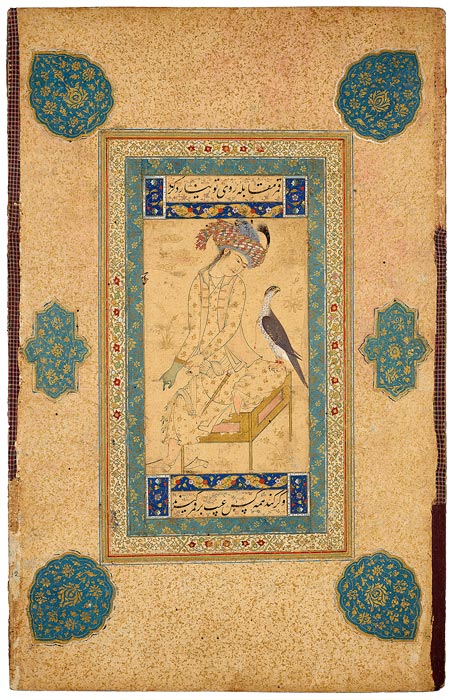
Paintings of young nobleman with their falcons became especially popular during the late sixteenth century. Here a young nobleman, pulling on a leather falconer's glove, gazes at his pet falcon perched on his knee. An elaborate scarf is wrapped around his turban, and a knife hangs from his waist. The bird's red halsband is secured by a gold clasp and red leg bands with bells. This work is after Ḥabīb-Allāh al-Mashhadī, who worked at Ḥusain Shāmlū's court in Herat.
The Read Persian Album
Pierpont Morgan's 1911 purchase of two albums (one Persian, one Mughal) from Sir Charles Hercules Read, Keeper of British and Medieval Antiquities at the British Museum, London, proved to be an important turning point in the history of the Morgan Islamic collection. Belle da Costa Greene, Morgan's librarian, accompanied by art historian and collector Bernard Berenson, first saw paintings from the albums at the great exhibition of Islamic art in Munich the previous year. She wrote to Read that they were among the finest works exhibited there and that this important school should be represented in Morgan's collection, asking him to give Morgan the right of first refusal. The Persian album was begun by Husain Khān Shāmlū, governor of Herat (r. 1598–1618), and possibly continued by his son and successor, Hasān Shāmlū (d. 1646). Fifteen of its twenty-seven sheets, once bound accordion style, are presented here. Many of the paintings were made in Herat itself.
